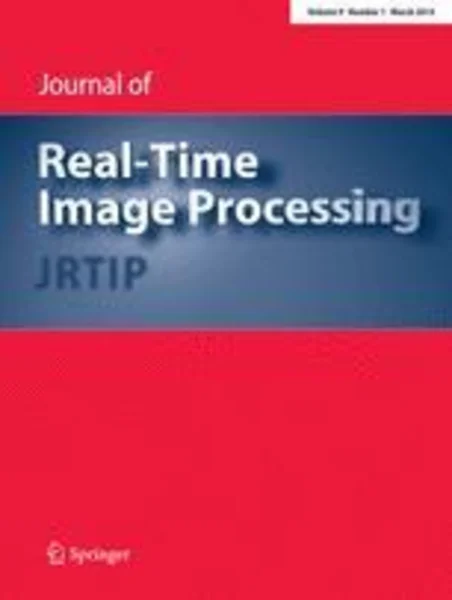-
real-time embedded systems powered by fpga dynamic partial self-reconfiguration: a case study oriented to biometric recognition applications
جزئیات بیشتر مقاله- تاریخ ارائه: 1392/07/24
- تاریخ انتشار در تی پی بین: 1392/07/24
- تعداد بازدید: 1020
- تعداد پرسش و پاسخ ها: 0
- شماره تماس دبیرخانه رویداد: -
this work aims to pave the way for an efficient open system architecture applied to embedded electronic applications to manage the processing of computationally complex algorithms at real-time and low-cost. the target is to define a standard architecture able to enhance the performance-cost trade-off delivered by other alternatives nowadays in the market like general-purpose multi-core processors. our approach, sustained by hardware/software (hw/sw) co-design and run-time reconfigurable computing, is synthesizable in sram-based programmable logic. as proof-of-concept, a run-time partially reconfigurable field-programmable gate array (fpga) is addressed to carry out a specific application of high-demanding computational power such as an automatic fingerprint authentication system (afas). biometric personal recognition is a good example of compute-intensive algorithm composed of a series of image processing tasks executed in a sequential order. in our pioneer conception, these tasks are partitioned and synthesized first in a series of coprocessors that are then instantiated and executed multiplexed in time on a partially reconfigurable region of the fpga. the implementation benchmark of the afas either as a pure software approach on a pc platform under a dual-core processor (intel core 2 duo t5600 at 1.83 ghz) or as a reconfigurable fpga co-design (identical algorithm partitioned in hw/sw tasks operating at 50 or 100 mhz on the second smallest device of the xilinx virtex-4 lx family) highlights a speed-up of one order of magnitude in favor of the fpga alternative. these results let point out biometric recognition as a sensible killer application for run-time reconfigurable computing, mainly in terms of efficiently balancing computational power, functional flexibility and cost. such features, reached through partial reconfiguration, are easily portable today to a broad range of embedded applications with identical system architecture.
مقالات جدیدترین رویدادها
-
استفاده از تحلیل اهمیت-عملکرد در ارائه الگوی مدیریت خلاقیت سازمانی و ارائه راهکار جهت بهبود
-
بررسی تاثیر ارزش وجوه نقد مازاد بر ساختار سرمایه شرکت های پذیرفته شده در بورس اوراق بهادار تهران
-
بررسی تأثیر سطح افشای ریسک بر قرارداد بدهی شرکت های پذیرفته شده در بورس اوراق بهادار تهران
-
بررسی تأثیر رتبه بندی اعتباری مبتنی بر مدل امتیاز بازار نوظهور بر نقد شوندگی سهام با تأکید بر خصوصی سازی شرکت ها
-
تأثیر آمیخته بازاریابی پوشاک ایرانی بر تصویر ذهنی مشتری پوشاک ایرانی (هاکوپیان)
-
ضرورت بکارگیری سیستم hse در مدیریت پروژه های عمرانی کشور (مطالعه ی موردی: تقاطع غیر هم سطح "بهارستان" شهرستان خرم آباد)
-
سی آداب شب یلدا و چهارشنبه سوری در آذربایجان شرقی (با تأکید بر گردشگری فرهنگی)
-
بررسی کتاب هدیه های آسمان نهم متوسطه با روش کلوز
-
ارزیابی و تعیین خصوصیا مکانیک شکست مود مرکب جوش در اتصالات سکوهای ثابت دریایی با آزمایش آرکان
-
پاتولوژی جغرافیایی ترکمنستان
مقالات جدیدترین ژورنال ها
-
مدیریت و بررسی افسردگی دانش آموزان دختر مقطع متوسطه دوم در دروان کرونا در شهرستان دزفول
-
مدیریت و بررسی خرد سیاسی در اندیشه ی فردوسی در ادب ایران
-
واکاوی و مدیریت توصیفی قلمدان(جاکلیدی)ضریح در موزه آستان قدس رضوی
-
بررسی تاثیر خلاقیت، دانش و انگیزه کارکنان بر پیشنهادات نوآورانه کارکنان ( مورد مطالعه: هتل های 3 و 4 ستاره استان کرمان)
-
بررسی تاثیر کیفیت سیستم های اطلاعاتی بر تصمیم گیری موفق در شرکتهای تولیدی استان اصفهان (مورد مطالعه: مدیران شرکتهای تولیدی استان اصفهان)
-
نقش شخصیت در تعهد و سلامت سازمانی پرستاران شاغل در بیمارستان های شهر اراک
-
ارزیابی سطح توسعه یافتگی شهرستان های استان کرمانشاه از لحاظ زیرساخت های گردشگری با استفاده از تکنیک vikor
-
ارزیابی عملکرد زنجیره تأمین شرکت های تولیدی با تلفیق مدل مرجع عملیات زنجیره تأمین (scor) و تکنیک danp
-
استفاده از فناوری مالتی پلکس تقسیم طول موج در ارتباطات فیبر نوری dwdm
-
designing manhole in water transmission lines using flow3d numerical model




سوال خود را در مورد این مقاله مطرح نمایید :